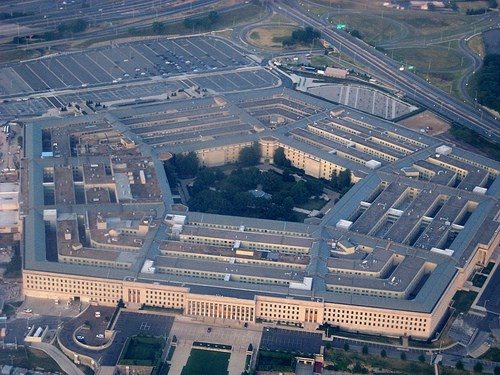The vice chiefs of the services told Congress members today that they fear budget cuts could cause a hollow force.
The men said they understand that the services face a lean time, but they asked the House Armed Services Committee’s readiness subcommittee to be judicious about cuts.
Gen. Peter W. Chiarelli, the Army’s vice chief of staff, asked the representatives to remember that the services have fought a 10-year war, with an all-volunteer force.
“That force is amazingly resilient, but at the same time, it is strained,” he said. “Its equipment is strained, soldiers are strained, families are strained. But they’ve been absolutely amazing over these 10 years at war.”
Chiarelli said he understands budget cuts and corresponding force reductions have to be made. “However, we must make them responsibly so that we do not end up with either a hollowed out force … or an unbalanced force,” he said.
The Army continues to look for efficiencies, the general said. “When we appeared before the committee in July, we were looking at cuts in the vicinity of $450 billion over 10 years,” he said. If the Army’s portion of that is about 26 percent, as it historically has been, he said, that will be “tough, but … doable.”
Anything more would be difficult for the service, he added.
The Army was cut too much in the drawdowns after World War I, World War II and the Vietnam War, Chiarelli said.
“I lived through an Army that came out of Vietnam … and for 10 to 12 years, we had to rebuild that Army,” he said. “These questions, these decisions have been made before, and there’s just a tendency to believe at the end of a war that we’ll never need ground forces again. Well, I tell you that we’ve never got that right. We have always required them. We just don’t have the imagination to always be able to predict exactly when that will be.”
The Navy is equally worried, Vice Chief of Naval Operations Adm. Mark Ferguson said. “In an era of declining budgets, we are ever mindful of the lessons of the past, when we assessed force readiness,” he told the committee. “Taken in sum or in parts, low personnel quality, aging equipment, degradation of material readiness and reduced training will inevitably lead to declining readiness of the force.”
The Navy must maintain balance to remain the world’s best naval force, Ferguson said. Military readiness is complicated.
“Our objective and challenge in this period of austerity will be to keep the funding for current and future readiness in balance, and holding acceptable level of risk in the capacity of those forces to meet the requirements of the combatant commanders,” he said.
The Navy will take a measured approach and look for efficiencies in overhead, infrastructure, personnel costs, force structure and modernization, he said.
The Marine Corps will take the strategy, figure what needs to be done to make it work, then take the available resources and build the most capable force they can, Gen. Joseph Dunford, the assistant commandant of the Marine Corps, said.
“As Defense Secretary [Leon] Panetta refines the strategy, the commandant is going to use what we learned during the force-structure review effort to make recommendations,” Dunford told the panel. “With regard to balance, we don’t want to make cuts in a manner that would create a hollow force.”
The Marine Corps is committed to the proposition that no matter what their size, “every unit that’s in the United States Marine Corps will be ready to respond to today’s crisis today,” he said.
Asked what would happen if budget constraints caused the Corps to shrink to 150,000, Dunford said the Corps came up with a size of an 186,800-member Marine Corps during the last force structure review.
“That is a single, major contingency operation force,” he said. “So that force can respond to only one major contingency. A hundred and fifty thousand would put us below the level that’s necessary to support a single contingency.”
The Marines also are busy handling humanitarian, counterpiracy, and disaster relief in many parts of the world, Dunford noted.
“Quite frankly, at 150,000 Marines, we’re going to have to make some decisions,” he said. “We will not be able to do those kinds of things on a day-to-day basis. We will not be able to meet the combatant commanders’ requirements for forward-delayed, forward-engaged forces. We will not be there to deter our potential adversaries. We won’t be there to assure our potential friends or to assure our allies. And we certainly won’t be there to contain small crises before they become major conflagrations.”
Air Force Gen. Phillip Breedlove, the service vice chief, said the Air Force is stressed. “These are challenging times, and the ops tempo is exacerbated, I think, by the fact that our Air Force since the opening of the Gulf War, has 34 percent fewer aircraft than we started that war with and about 26 percent fewer people,” he said.
Breedlove said he does not foresee a change in operational tempo and this will lead to a “slow, but steady decline in our unit readiness.”
The service also has picked up new missions including supporting the joint team with intelligence, surveillance and reconnaissance. “We’ve also been asked to build an increased capacity in special operations,” the general said.
The Air Force is flying the oldest fleet in its history, “and we do need to desperately get to recapitalization during this age of fiscal austerity,” he said.
“Many of the challenges we see will come … on the backs of our people,” he said. “As we get smaller and as we expect that the tasking does not change, the deploy-to-dwell times and the op tempo on our airmen will only increase, and more importantly, I think the op tempo on our proud reserve component … will have to increase because they will become ever more important in a diminishing force.”










